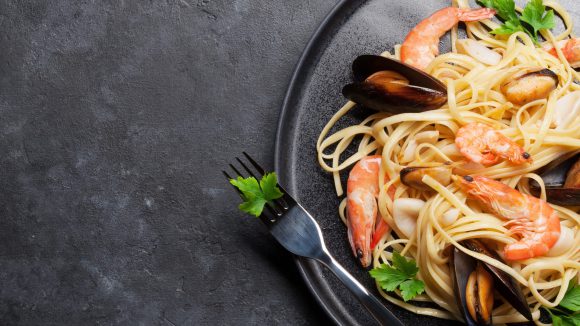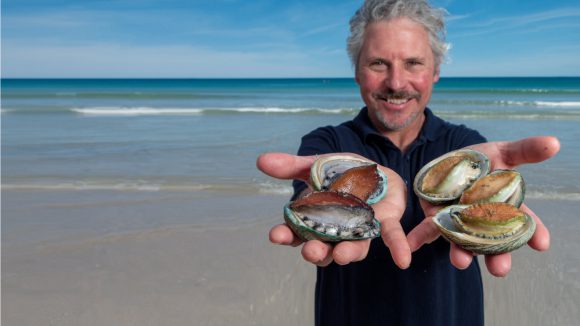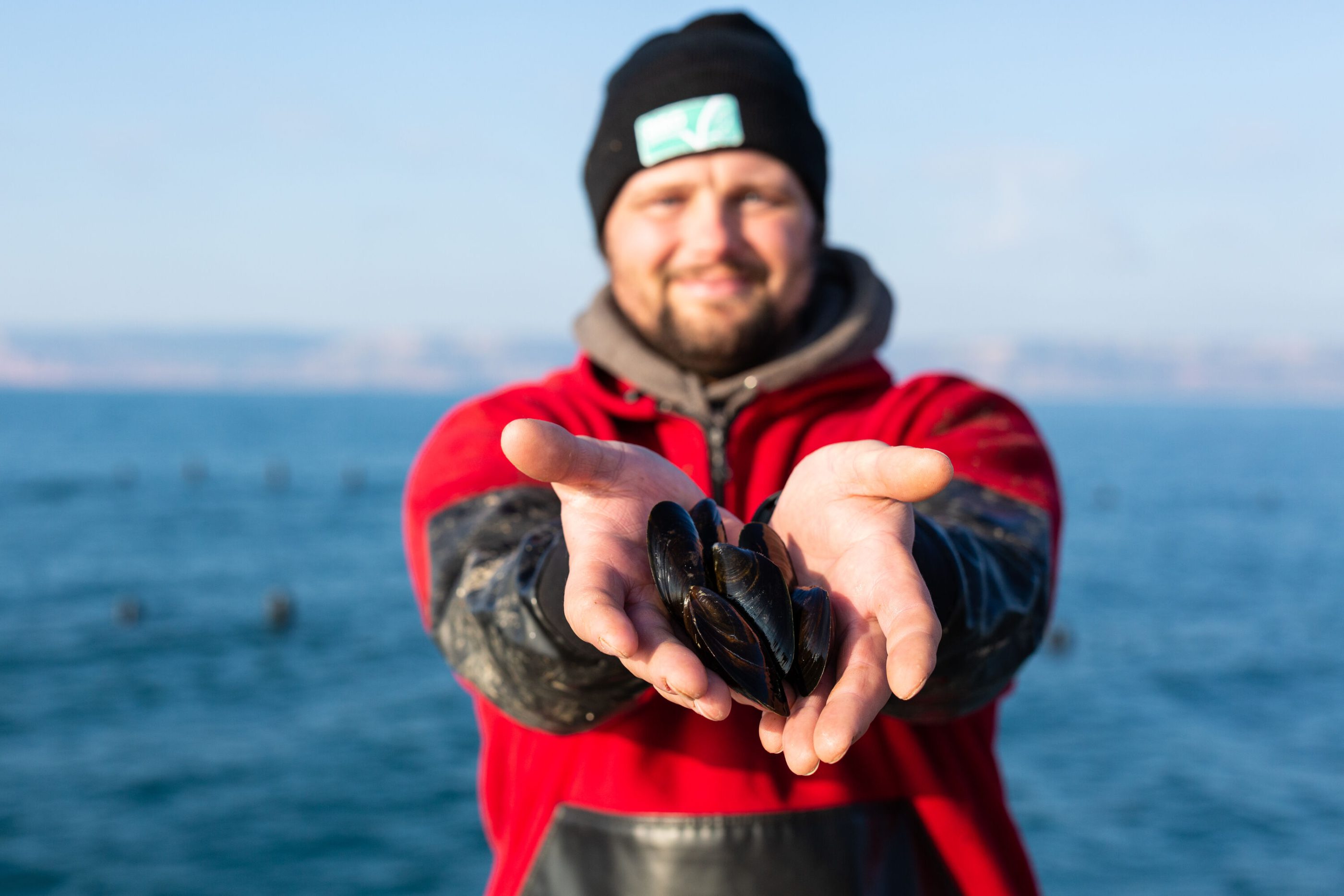
Introducing shrimp: the globetrotter of seafood
Versatile and tasty, shrimp are popular all over the world and appear in many different national cuisines. Prawn paella, anyone?
With over 55% of shrimp farmed globally and opportunities to improve shrimp farms, let’s explore these crustaceans and how to make the more sustainable choice when cooking your next shrimp dish.
What kind of shrimp do we eat?
There are around 2,000 different species of shrimp around the world, with five species regulated by the ASC Shrimp Standard:
- Pacific whiteleg shrimp are native to the eastern Pacific between Mexico and the north Peru, and mainly in Central America.
- Giant tiger prawns live off the coasts of Australia, Southeast Asia, South Asia, and East Africa.
- Greasyback shrimp are found widely in the waters off Indonesia, Malaysia, Vietnam, Thailand, and China. Also in Japan, North and South Korea, the Philippines, Australia, and Papua New Guinea.
- Banana prawns live all the way from the Persian Gulf to Thailand. Also in Hong Kong, the Philippines, Indonesia, New Guinea, New Caledonia, and northern Australia.
- Indian white prawns thrive in estuaries around East Africa, India, Malaysia, Indonesia, southern China, and northern Australia.
Where do shrimp live?
Shrimp live all over the world, in many different environments from the tropics to the arctic circle. Some live only in freshwater, with others in the brackish water of mangroves and estuaries or up to 5,000 metres deep in the ocean.
Size and appearance vary depending on their habitat and with this global footprint it’s not surprising that shrimp can be found in many different cuisines.
How are shrimp farmed?
Shrimp farming has grown from small, traditional farms in Southeast Asia into a global industry. In 2020 global trade of shrimp and prawns was estimated at $28 billion per year with shrimp seafood farming playing an important role in this lucrative market. Farmed shrimp make up 55 percent of the shrimp produced globally, and Pacific whiteleg shrimp and giant tiger prawns account for about 80% of farmed shrimp production.
Farming methods include extensive farming, semi-intensive, and intensive farming reflecting low, medium, and high stocking densities.
Extensive farming has a very low stocking density meaning there are few shrimp per litre of water. The shrimp are not fed and the water in the ponds is tidal and not actively managed. his method is commonly found in Latin America.
Semi-intensive farming has a medium stocking density in ponds above the high-tide line and with more competition for food feed is supplemented. It is common in China, Ecuador, Honduras, Mexico, and Colombia.
Intensive farming has a high stocking density in ponds requiring appropriate management, feeding, aeration, and waste removal is necessary. Intensive farming is common in Thailand, the Philippines, Malaysia, and Australia.
What are farmed shrimp fed?
Most shrimp are omnivorous opportunistic feeders that eat almost anything they find. In extensive farming, they feed themselves as they do in the wild. In intensive farming methods, they are fed with feed usually including a mix of marine and terrestrial ingredients like fish meal and soy.
ASC certification requires farms to adhere to strict limits to minimise the use of wild fish as an ingredient for their feed Farms must also trace their plant-based feed ingredients to responsible sources.
Can shrimp farming be sustainable?
Yes.
There was a shrimp farming boom in the 1970s and 1980s, with a decline in the late 1980s and 1990s when the industry ran into problems due to poor management practices and disease. Since this lack of public confidence, programmes were launched to implement more sustainable farming practices and
Production has been increasing again since the early 2000s, when programs were launched to implement more sustainable farming practices. The rapid growth of shrimp farming included the loss of mangroves forests. The ASC Shrimp Standard addresses these issues and ensures that shrimp farms are run responsibly.
WWF started working on sustainable shrimp aquaculture practices in 1994, establishing set up the multi-stakeholder Shrimp Dialogue in 2007, and handed the Shrimp Standard to the ASC in 2014. These efforts have significantly improved production standards across the globe.
How does shrimp farming affect mangroves?
Mangroves are extremely important to the coastal environments where they grow, are home to many plants and animals and can help fight climate change.
Shrimp and mangroves are often found in the same areas, in brackish water along the coast. During the shrimp farming boom in the 1980s, some shrimp farmers cleared mangrove forests to make room for shrimp ponds – since 1970, an estimated 50% of all mangroves were deforested, with about a quarter converted to commercial aquaculture ponds.
Non-responsible seafood farming can also degrade neighboring mangroves due to water quality changes from altered hydrology, pollution, and eutrophication, resulting in heavily polluted discharged effluent.
Mangrove conservation is a key concern and area of attention for ASC. Our ASC Shrimp Standard forbids the clearing of mangroves for any shrimp farm built after May 1999 and includes provisions on mangrove regeneration.
Are farmed shrimp healthy?
Yes, ASC-certified farmed shrimp are healthy to eat. They have 85 calories per 100 grams and contain vitamins and minerals including vitamin B12, potassium, zinc and magnesium. They’re a good source of iodine and Omega 3 fatty acids and both shrimp and salmon contain antioxidants called astaxanthin, giving them their pink colour which has health benefits for humans .
ASC labelled shrimp do not contain antibiotics. ASC certified farms are held to strict standards to minimise disease outbreaks and develop health plans. Antibiotics and prophylactic medicines are not allowed, and medicine is only used for animal welfare reasons under strict conditions.
When you buy ASC labeled shrimp, you’re making a responsible and healthy choice.
Cooking with shrimp
Shrimp and prawns are a great, healthy option for cooking. They are low in fat, high in protein, and are easily digestible. They can be cooked in many different ways, in or out of their shells. And the shells make a great stock.
Cooking in minutes, they are an easy meal option. The small crustaceans are featured in almost every cuisine, so you can really explore the world while cooking.
Try a quick stir-fry or add a prawn paella to the weekend menu.
Explore More

Learn more about Seafood Farming
Find out how farmed seafood can help feed a growing global population, why fish farming needs to be done responsibly and how you can make a responsible choice.

Visit our Blog
Find out what’s behind the label, what’s going on in the world of aquaculture and how the Aquaculture Stewardship Council is updating and improving its programmes regularly.

The Aquaculture Stewardship Council
We run the world’s leading certification programme for responsibly farmed seafood. Learn about our Certification Programmes and our Impact.



